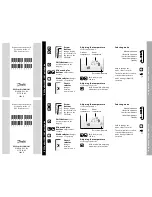
4.2.7
How TH320 works
The functional principle is described below based on the function chart.
5
1
4
3
2
1 (+)
2 (-)
µC1
µC2
4 ... 20 mA
U, I
out
SITRANS TH320
D
A
A
D
①
LED
⑤
Galvanic isolation
②
Extension port
⑥
Input
③
Test terminals
A/D
Analog-to-digital converter
④
Output
μC1 Microcontroller, on the secondary side
μC2 Microcontroller, on the pri‐
mary side
D/A
Digital-to-analog converter
U
Supply voltage
I
out
Output current
Figure 4-7
Function chart for SITRANS TH320
• Input
⑥
for connecting different signal sources. Section: Input (Page 201).
• This signal is converted to a digital signal in an analog-to-digital converter (A/D).
• The digital signal is evaluated in a microcontroller (μC1) on the secondary side and corrected
to match the input characteristic.
• The digital signal is transferred via the galvanic isolation
⑤
to the microcontroller (μC2) on
the primary side.
• The analog output value is calculated in the microcontroller (μC2) on the primary side. The
functional status is indicated by LED
①
and the communications data is prepared.
• The digital-to-analog converter (D/A) subsequently converts the signal into the output
current
④
of 4 to 20 mA.
Description
4.2 SITRANS TH320/TH420
SITRANS TH100/TH320/TH420/TR320/TR420/TF320/TF420 with 4 to 20 mA/HART
Operating Instructions, 05/2020, A5E41864807-AB
39
















































